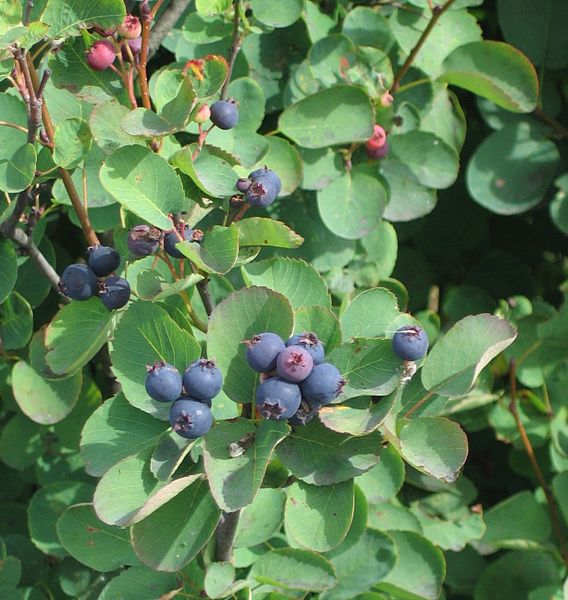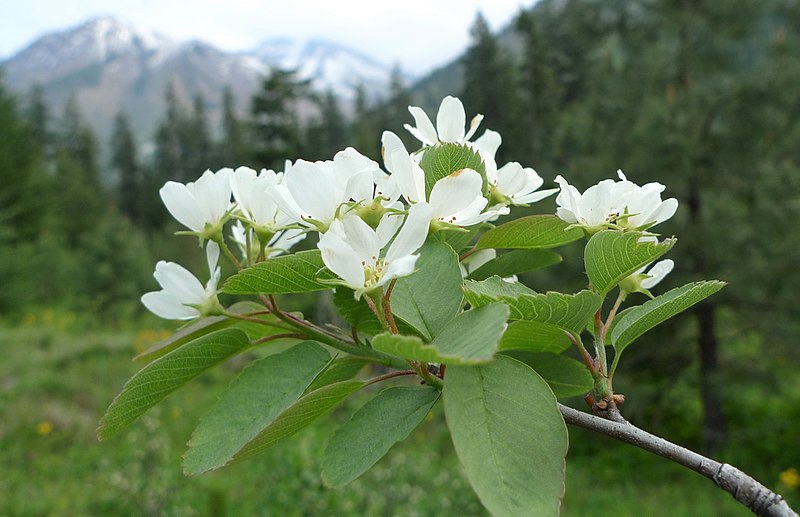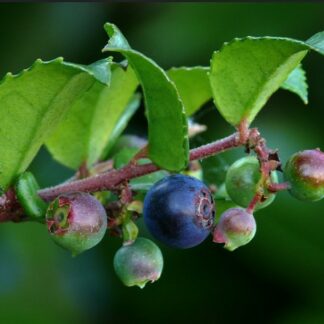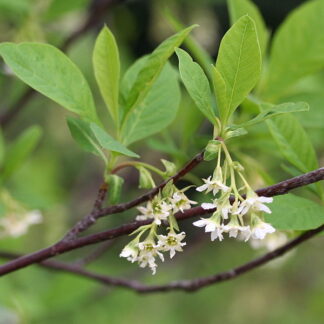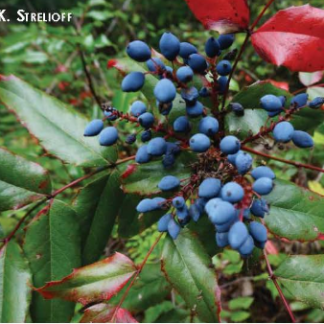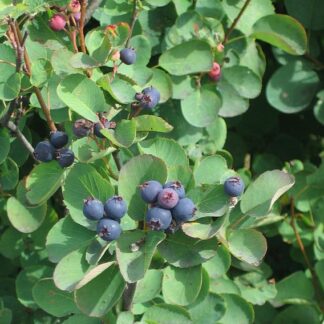Description
Sold in bundles of 10.
At a Glance: Medium-sized shrub producing fragrant white flowers in late spring.
Height: Up to 15 feet (4.5 meters).
Stems: Stems are smooth and slender, often with leaning trunks. Bark is dark gray to reddish.
Leaves: Leaves are alternate, round to oval in shape, green. The top half of the leaf is toothed.
Flowers: Clusters of large white flowers range from drooping to erect. Each flower has 5 petals with 15 to 20 stamens each; size: 1-2.5 cm across.
Flowering Period: April, May.
Fruits: The berry-like fruits are called pomes. Fruits start to form soon after flowers fade. Color: initially dull-red, turning dark purple/black with a white bloom.
Conservation Uses: Serviceberry has many uses as a conservation species. It establishes well in disturbed sites with coarse soils. Its dense, spreading, rhizomatous root system provides good soil stabilization. It is also an excellent plant for enhancing wildlife habitat. The berries produced in late summer are a favorite food of animals including birds, rodents and bears. It also provides winter forage for many mammals, which can place young seedlings and saplings at risk. New plantings may require protection from livestock, deer, mice, voles, etc. Serviceberry is also used as an ornamental. It produces masses of fragrant white flowers in late spring. Its foliage is also quite attractive in the fall. It has historically been cultivated for berry production.
Helpful Tips: As with any new planting, it should be watered during the dry season for the first 2-3 years. Click HERE to determine your recommended planting density.
Interesting Facts: Also known as Saskatoon, the serviceberry berry was widely used by Native American tribes as a food source. It is sweet and edible to humans. The wood was used for arrows, digging sticks and drying racks.
| Sun/Shade Tolerance | Hydrology | Elevation Range |
|
full sun > 80%
mostly sunny 60%-80%
partial sun and shade 40%- 60%
mostly shady 60%-80%
full shade > 80%
|
wet
moist
dry
|
low elevation
mid elevation
sub-alpine
high elevation
|
| Soil Preferences | ||
|
sandy soils
gravelly soils
clay soils
muddy soils
peaty soils
|
well drained soils
shallow soils
deep soils
acidic soils
basic soils
|
humic soils
nutrient rich soils
nutrient poor soils
mineral soils
organic soils
|
| Wildlife Value | |
|
Berries
Seeds
Nectar for hummingbirds
Nectar for butterflies
Host for insect larvae
Thickets and shelter
Thorny or protective cover
|
Birds: The serviceberries are eaten by woodpeckers, crows, chickadees, thrushes, towhees, bluebirds, waxwings, orioles, tanagers, grosbeaks, goldfinches, juncos, grouse, and pheasants. Insects: The nectar is used by spring azure butterflies. The foliage is eaten by swallowtail and other butterfly larvae. Mammals: Mammals that eat the berries include chipmunks, marmots, skunks, foxes, ground squirrels, raccoons, and bear. Deer and elk browse the leaves and twigs. |
Livestock Toxicity: Serviceberry fruits are edible, however, the leaves and twigs contain cyanogenic glycoside, which produces the toxin cyanide. Livestock consumption causes mild to moderate cyanide toxicity presenting as initial rapid breathing, followed by slow, difficult breathing, excitement, confusion, vomiting and dizziness.
References:
Pojar, Jim, and Andy MacKinnon. Plants of the Pacific Northwest Coast: Washington, Oregon, British Columbia & Alaska. Revised ed. Redmond, Wash.: B.C. Ministry of Forests and Lone Pine Pub., 2004. Print.
“Sound Native Plants.” Sound Native Plants. Web. 31 Oct. 2014. www.soundnativeplants.com.

